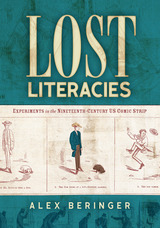
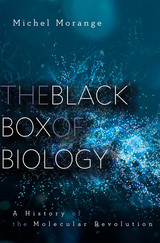
In this masterful account, a historian of science surveys the molecular biology revolution, its origin and continuing impact.
Since the 1930s, a molecular vision has been transforming biology. Michel Morange provides an incisive and overarching history of this transformation, from the early attempts to explain organisms by the structure of their chemical components, to the birth and consolidation of genetics, to the latest technologies and discoveries enabled by the new science of life. Morange revisits A History of Molecular Biology and offers new insights from the past twenty years into his analysis.
The Black Box of Biology shows that what led to the incredible transformation of biology was not a simple accumulation of new results, but the molecularization of a large part of biology. In fact, Morange argues, the greatest biological achievements of the past few decades should still be understood within the molecular paradigm. What has happened is not the displacement of molecular biology by other techniques and avenues of research, but rather the fusion of molecular principles and concepts with those of other disciplines, including genetics, physics, structural chemistry, and computational biology. This has produced decisive changes, including the discoveries of regulatory RNAs, the development of massive scientific programs such as human genome sequencing, and the emergence of synthetic biology, systems biology, and epigenetics.
Original, persuasive, and breathtaking in its scope, The Black Box of Biology sets a new standard for the history of the ongoing molecular revolution.
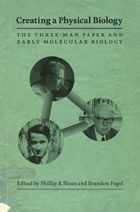
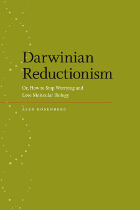
With clarity and wit, Darwinian Reductionism navigates this difficult and seemingly intractable dualism with convincing analysis and timely evidence. In the spirit of the few distinguished biologists who accept reductionism—E. O. Wilson, Francis Crick, Jacques Monod, James Watson, and Richard Dawkins—Rosenberg provides a philosophically sophisticated defense of reductionism and applies it to molecular developmental biology and the theory of natural selection, ultimately proving that the physicalist must also be a reductionist.

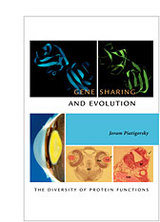
"Gene sharing" means that the different functions of a protein may share the same gene--that is, a protein produced by a gene evolved to fulfill a specialized function for one biological role may also perform alternate functions for other biological roles.
In the 1980s and early 1990s, Joram Piatigorsky and colleagues coined the term "gene sharing" to describe the use of multifunctional proteins as crystallins in the eye lens. In Gene Sharing and Evolution Piatigorsky explores the generality and implications of gene sharing throughout evolution and argues that most if not all proteins perform a variety of functions in the same and in different species, and that this is a fundamental necessity for evolution.
How is a gene identified, by its structure or its function? Do the boundaries of a gene include its regulatory elements? What is the influence of gene expression on natural selection of protein functions, and how is variation in gene expression selected in evolution? These are neither new nor resolved questions. Piatigorsky shows us that the extensiveness of gene sharing and protein multifunctionality offers a way of responding to these questions that sheds light on the complex interrelationships among genes, proteins, and evolution.
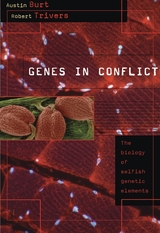
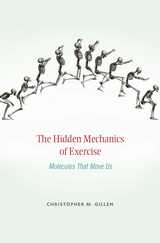
As anyone who takes up a new sport quickly discovers, even basic athletic moves require high levels of coordination and control. Whether dribbling a basketball or hitting a backhand, limbs must be synchronized and bodies balanced, all with precise timing. But no matter how diligently we watch the pros or practice ourselves, the body’s inner workings remain invisible.
The Hidden Mechanics of Exercise reveals the microworld of the human body in motion, from the motor proteins that produce force, to the signaling molecules that activate muscles, to the enzymes that extract energy from nutrients. Christopher Gillen describes how biomolecules such as myosin, collagen, hemoglobin, and creatine kinase power our athletic movements. During exercise, these molecules dynamically morph into different shapes, causing muscles, tendons, blood, and other tissues to perform their vital functions. Gillen explores a wide array of topics, from how genetic testing may soon help athletes train more effectively, to how physiological differences between women and men influence nutrition. The Hidden Mechanics of Exercise tackles questions athletes routinely ask. What should we ingest before and during a race? How does a hard workout trigger changes in our muscles? Why does exercise make us feel good?
Athletes need not become biologists to race in a triathlon or carve turns on a snowboard. But Gillen, who has run ten ultramarathons, points out that athletes wishing to improve their performance will profit from a deeper understanding of the body’s molecular mechanisms.
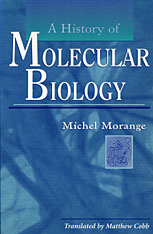
Every day it seems the media focus on yet another new development in biology--gene therapy, the human genome project, the creation of new varieties of animals and plants through genetic engineering. These possibilities have all emanated from molecular biology.
A History of Molecular Biology is a complete but compact account for a general readership of the history of this revolution. Michel Morange, himself a molecular biologist, takes us from the turn-of-the-century convergence of molecular biology's two progenitors, genetics and biochemistry, to the perfection of gene splicing and cloning techniques in the 1980s. Drawing on the important work of American, English, and French historians of science, Morange describes the major discoveries--the double helix, messenger RNA, oncogenes, DNA polymerase--but also explains how and why these breakthroughs took place. The book is enlivened by mini-biographies of the founders of molecular biology: Delbrück, Watson and Crick, Monod and Jacob, Nirenberg.
This ambitious history covers the story of the transformation of biology over the last one hundred years; the transformation of disciplines: biochemistry, genetics, embryology, and evolutionary biology; and, finally, the emergence of the biotechnology industry.
An important contribution to the history of science, A History of Molecular Biology will also be valued by general readers for its clear explanations of the theory and practice of molecular biology today. Molecular biologists themselves will find Morange's historical perspective critical to an understanding of what is at stake in current biological research.

A majority of evolutionary biologists believe that we now can envision our biological predecessors—not the first, but nearly the first, living beings on Earth. Life from an RNA World is about these vanished forebears, sketching them in the distant past just as their workings first began to resemble our own. The advances that have made such a pursuit possible are rarely discussed outside of bio-labs. So here, says author Michael Yarus, is an album for interested non-biologists, an introduction to our relatives in deep time, slouching between the first rudimentary life on Earth and the appearance of more complex beings.
The era between, and the focus of Yarus’ work, is called the RNA world. It is RNA (ribonucleic acid)—long believed to be a mere biologic copier and messenger—that offers us this glimpse into our ancient predecessors. To describe early RNA creatures, here called “ribocytes” or RNA cells, Yarus deploys some basics of molecular biology. He reviews our current understanding of the tree of life, examines the structure of RNA itself, explains the operation of the genetic code, and covers much else—all in an effort to reveal a departed biological world across billions of years between its heyday and ours.
Courting controversy among those who question the role of “ribocytes”—citing the chemical fragility of RNA and the uncertainty about the origin of an RNA synthetic apparatus—Yarus offers an invaluable vision of early life on Earth. And his book makes that early form of life, our ancestor within, accessible to all of us.

Membranes to Molecular Machines explores just how late twentieth-century science came to think of our cells and bodies this way. This story is told through the lens of membrane research, an unwritten history at the crossroads of molecular biology, biochemistry, physiology, and the neurosciences, that directly feeds into today's synthetic biology as well as nano- and biotechnology. Mathias Grote shows how these sciences not only have made us think differently about life, they have, by reworking what membranes and proteins represent in laboratories, allowed us to manipulate life as "active matter" in new ways. Covering the science of biological membranes in the United States and Europe from the mid-1960s to the 1990s, this book connects that history to contemporary work with optogenetics, a method for stimulating individual neurons using light, and will enlighten and provoke anyone interested in the intersection of chemical research and the life sciences—from practitioner to historian to philosopher.
The research described in the book and its central actor, Dieter Oesterhelt, were honored with the 2021 Albert Lasker Basic Medical Research Award for his contribution to the development of optogenetics.
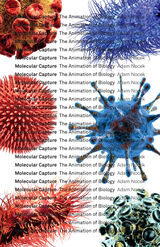
How computer animation technologies became vital visualization tools in the life sciences
Who would have thought that computer animation technologies developed in the second half of the twentieth century would become essential visualization tools in today’s biosciences? This book is the first to examine this phenomenon. Molecular Capture reveals how popular media consumption and biological knowledge production have converged in molecular animations—computer simulations of molecular and cellular processes that immerse viewers in the temporal unfolding of molecular worlds—to produce new regimes of seeing and knowing.
Situating the development of this technology within an evolving field of historical, epistemological, and political negotiations, Adam Nocek argues that molecular animations not only represent a key transformation in the visual knowledge practices of life scientists but also bring into sharp focus fundamental mutations in power within neoliberal capitalism. In particular, he reveals how the convergence of the visual economies of science and entertainment in molecular animations extends neoliberal modes of governance to the perceptual practices of scientific subjects. Drawing on Alfred North Whitehead’s speculative metaphysics and Michel Foucault’s genealogy of governmentality, Nocek builds a media philosophy well equipped to examine the unique coordination of media cultures in this undertheorized form of scientific media. More specifically, he demonstrates how governmentality operates across visual practices in the biosciences and the popular mediasphere to shape a molecular animation apparatus that unites scientific knowledge and entertainment culture.
Ultimately, Molecular Capture proposes that molecular animation is an achievement of governmental design. It weaves together speculative media philosophy, science and technology studies, and design theory to investigate how scientific knowledge practices are designed through media apparatuses.

In this accessible analysis, a philosopher and a science educator look at biological theory and society through a synthesis of mechanistic and organicist points of view to best understand the complexity of life and biological systems.
The search for a unified framework for biology is as old as Plato’s musings on natural order, which suggested that the universe itself is alive. But in the twentieth century, under the influence of genetics and microbiology, such organicist positions were largely set aside in favor of mechanical reductionism, by which life is explained by the movement of its parts. But can organisms truly be understood in mechanical terms, or do we need to view life from the perspective of whole organisms to make sense of biological complexity?
The New Biology argues for the validity of holistic treatments from the perspectives of philosophy, history, and biology and outlines the largely unrecognized undercurrent of organicism that has persisted. Mechanistic biology has been invaluable in understanding a range of biological issues, but Michael Reiss and Michael Ruse contend that reductionism alone cannot answer all our questions about life. Whether we are considering human health, ecology, or the relationship between sex and gender, we need to draw from both organicist and mechanistic frameworks.
It’s not always a matter of combining organicist and mechanistic perspectives, Reiss and Ruse argue. There is scope for a range of ways of understanding the complexity of life and biological systems. Organicist and mechanistic approaches are not simply hypotheses to be confirmed or refuted, but rather operate as metaphors for describing a universe of sublime intricacy.
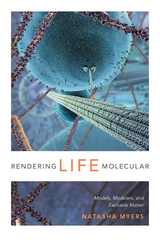
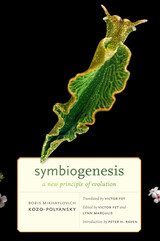
More than eighty years ago, before we knew much about the structure of cells, Russian botanist Boris Kozo-Polyansky brilliantly outlined the concept of symbiogenesis, the symbiotic origin of cells with nuclei. It was a half-century later, only when experimental approaches that Kozo-Polyansky lacked were applied to his hypotheses, that scientists began to accept his view that symbiogenesis could be united with Darwin's concept of natural selection to explain the evolution of life. After decades of neglect, ridicule, and intellectual abuse, Kozo-Polyansky's ideas are now endorsed by virtually all biologists.
Kozo-Polyansky's seminal work is presented here for the first time in an outstanding annotated translation, updated with commentaries, references, and modern micrographs of symbiotic phenomena.
READERS
Browse our collection.
PUBLISHERS
See BiblioVault's publisher services.
STUDENT SERVICES
Files for college accessibility offices.
UChicago Accessibility Resources
home | accessibility | search | about | contact us
BiblioVault ® 2001 - 2024
The University of Chicago Press






